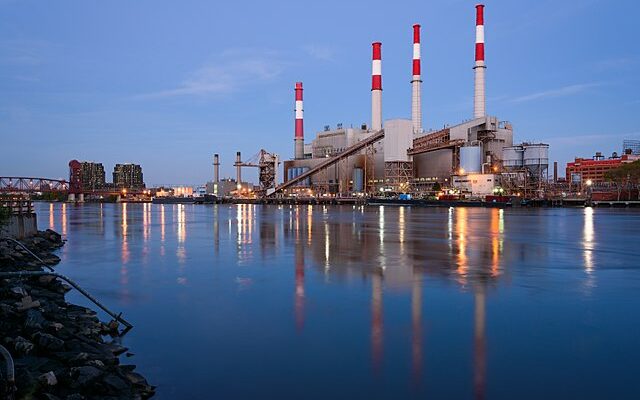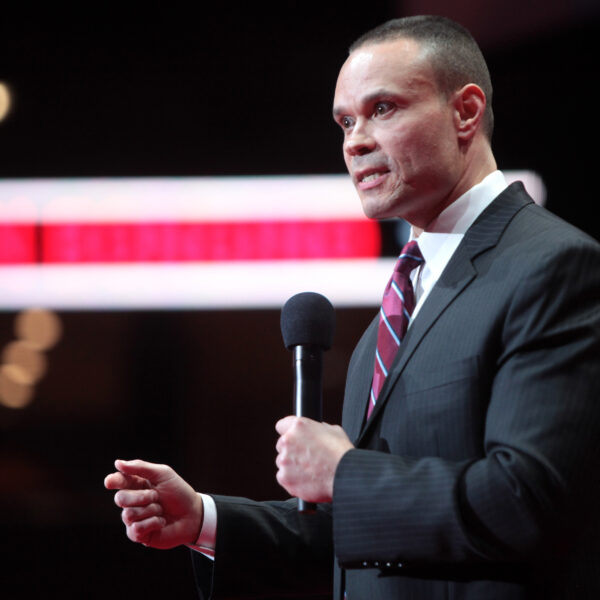
Last month, TIME noted that a “string of mysterious attacks on power stations across the U.S.” had “rekindled fears about the vulnerabilities of America’s electricity infrastructure, which security officials have warned presents a growing target to extremists and saboteurs.
Attacks and suspicious activity at U.S. power stations reached a decade-long high last year, with more than 100 reported incidents in the first eight months of 2022, according to a TIME review of the Department of Energy’s most recent data, which runs through August. Since then, there have been at least 18 more publicly reported attacks or potential attacks on substations and power plants in Florida, North Carolina, Oregon, South Carolina, and Washington.
A DHS intelligence memo last year warned of “credible, specific plans” by domestic violent extremists “adhering to a range of ideologies” who would “continue to plot and encourage physical attacks against electrical infrastructure.” Officials said extremists were encouraging attacks on the power grid on encrypted messaging apps and other platforms, making suspicious activity difficult to detect. They also noted that extremists seemed to reference the 2013 attack in California, which is widely cited by some extremist groups as a model of how to cause widespread disruption and get away.”
The Wall Street Journal now reports that attacks on the American power system increased by 71 percent over the past year and “will likely increase this year, according to a confidential industry analysis.”
The newspaper writes, “A division of the grid oversight body known as the North American Electric Reliability Corporation found that ballistic damage, intrusion and vandalism largely drove the increase. The analysis also determined that physical security incidents involving power outages have increased 20% since 2020, attributed to people frustrated by the onset of the pandemic, social tensions and economic challenges.
The NERC division, known as the Electricity Information Sharing and Analysis Center, or E-ISAC, recorded the sharp increase in incidents in 2022, driven in part by a series of clustered attacks on infrastructure in the Southeast, Midwest and Pacific Northwest. One of the most significant incidents occurred in early December when attackers targeted several substations in North Carolina with gunfire, leaving roughly 45,000 people in the dark.
The E-ISAC study of grid attacks, which other U.S. government agencies have said are on the rise, is more robust than publicly available data sets. The division’s data includes some nonpublic reports that utilities and grid authorities file with federal agencies or NERC, as well as voluntary disclosures made confidentially. The division tracked a significant increase in mandatory reports last year.
The division wrote that it is reasonably likely that the uptick in such attacks will continue this year based on the number and nature of recent attacks, some of which appear to have been carried out by members of extremist groups aiming to destabilize the grid.”
We have noted the major environmental disasters that have been occurring in Ohio, but over past month, the United States has seen mysterious fires at power plants and other train derailments, as well.
🚨#BREAKING: A massive fire breaks out at a renewable energy plant EPA advises residents to “shelter in place”
⁰📌#Doral | #FloridaA Massive fire broke out at a renewable energy plant in Doral, Florida and has been burning for over 5 days straight, spreading to multiple… https://t.co/FfPIgfchqC pic.twitter.com/sGM7Xd51xc
— R A W S A L E R T S (@rawsalerts) February 17, 2023
A train has derailed in the Houston area.
Officials report the train was carrying "hazardous materials, prompting Union Pacific to monitor air quality at the site of the crash, according to the Splendora Police Department." pic.twitter.com/39XEGvTmpZ
— Citizen Free Press (@CitizenFreePres) February 13, 2023
🚨#BREAKING: A fire breaks out at a chemical tank that leads to temporary evacuations⁰⁰📌#Catoosa | #Oklahoma⁰⁰The Tulsa Port Authority says an oil/chemical tanker at the Port of Catoosa has caught fire, causing evacuations on site and the nearby businesses. Residents are… https://t.co/ACdwKcgLdr pic.twitter.com/yVRjyTOVhf
— R A W S A L E R T S (@rawsalerts) February 15, 2023
The report comes as leftwing activists have been outspoken about using violence against fossil fuels. Andreas Malm, an associate professor of human ecology at Lund University and author of How to Blow Up a Pipeline said last year that “the task for the climate movement is to make clear for people that building new pipelines, new gas terminals, opening new oil fields are acts of violence that need to be stopped — they kill people.”
Malm, according to Bloomberg, “argues that while the majority of climate action should remain non-violent, no social sea change — from the suffragettes to the Civil Rights Movement — has succeeded through completely peaceful activism. “We shouldn’t engage in assassinations or terrorism, or use arms and things like that,” he says. “But until that line or boundary, we need virtually everything … all the way up to sabotage and property destruction.”
The stakes are high for protesters engaged in disruptive tactics, as governments around the world target them with increasingly punitive legislation. Last month in the UK, Just Stop Oil activist Jan Goodey was sentenced to six months in prison for causing disruption on a major London motorway. Earlier this month in Australia, climate protester Deanna “Violet” Coco was sentenced to 15 months in jail for blocking a lane of traffic on the Sydney Harbour Bridge for 28 minutes.
Malm says this response is to be expected. ‘That’s what always happens when you escalate. As soon as you pose a danger to the system, this is what you’ll get in return,’ he says. “And that’s a sign that you’re doing something good, that you are actually challenging some interests.’”
The talk of violence and sabotage hasn’t just been from the radical wings of activism. In 2021, The New Yorker, an outlet hardly considered out of the mainstream of polite society, asked “Should the Climate Movement Embrace Sabotage?”
Read More: English Global Warming Radicals Come To America
The young face of climate change activism, Greta Thunberg, has recently embraced radicalism. She joined crowds of activists who “marched on the hamlet of Lützerath in western Germany, waving banners, chanting and accompanied by a brass band, but there were also violent clashes with police.
Thunberg marched at the front of the procession as demonstrators converged on the village, showing support for activists occupying it in protest over the coalmine extension.
Local media reported stones being thrown at police. One demonstrator was seen with a head injury, as ambulance sirens sounded near the protest site,” The Guardian reported.
Thunberg recently outed herself as a hardcore leftist. In discussing her new book, Unherd wrote, “Previously, she’d sold herself as a five-foot human alarm bell, a climate Cassandra. Her role was to warn, not to instruct: her most viral moments involved her scolding political leaders, not trying to supplant them. She strenuously avoided programmatic detail, saying such things were “nothing to do with me”. But now, on stage and in this book, she has found her political feet, specifically the Left-wing ideology of anti-capitalism and de-growth.
Interspersed among the usual directives about the need to pressure political leaders, her message was more radical and more militant than it has been in the past. There is no ‘back to normal,’ she told us. ‘Normal’ was the “system” which gave us the climate crisis, a system of ‘colonialism, imperialism, oppression, genocide’, of “racist, oppressive extractionism.’ Climate justice is part of all justice; you can’t have one without the others. We can’t trust the elites produced by this system to confront its flaws — that’s why she, much like Rishi Sunak, won’t be bothering with the COP meeting this year. COP itself is little more than a “scam” which facilitates “greenwashing, lying and cheating.’ Only overthrow of ‘the whole capitalist system’ will suffice.
So now we are finally seeing the contours of Thunbergism. Run your eye down the contributors to The Climate Book and you can see who she’s been reading: Jason Hickel, Kate Raworth, Naomi Klein. For these people the climate crisis isn’t man-made. It’s made by capitalism, as are the other forms of social injustice which plague society. There’s no GDP growth — especially of the capitalist sort — without increasing carbon emissions. The only solution to this state of emergency is for rich countries to immediately abandon economic expansion as a social goal.
It is hardly surprising that Greta thinks this way given how closely tied environmental activism has become with the more experimental end of the modern Left. De-growth is surely not the only feasible solution to the climate crisis, but Greta appears to have no doubts. And, like the bulk of her generation, she has lost any faith in the gradualist, establishment Left’s power to change things. Her teens spent chiding national governments have made her one of the most famous people in the world — her twenties look set to be far more explosive, and even revolutionary.”
Does The Wall Street Journal report and what we’ve seen happening to climate change activists seem like a coincidence to you?
[Read More: Left Turns To Racism Against GOP Favorite]











